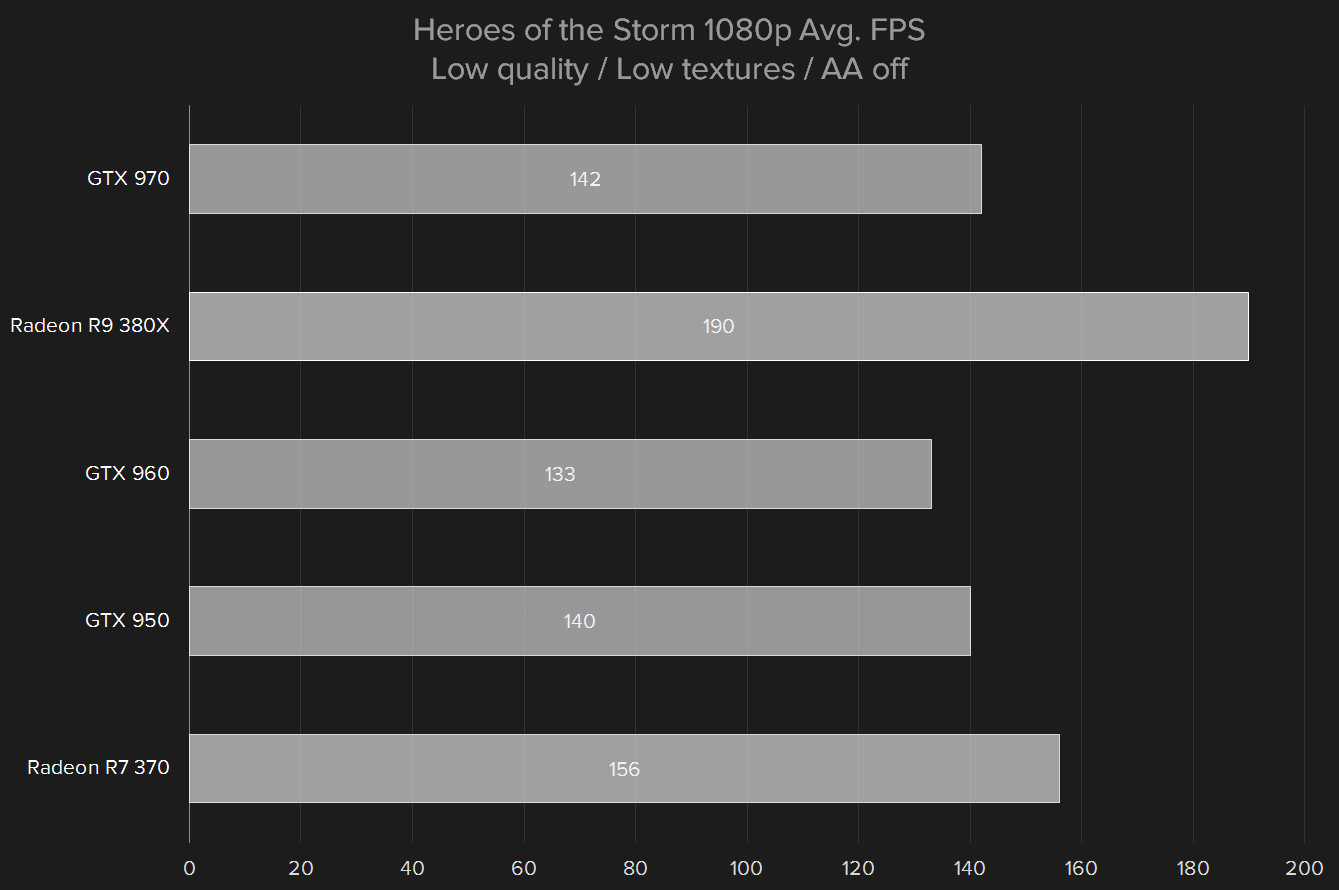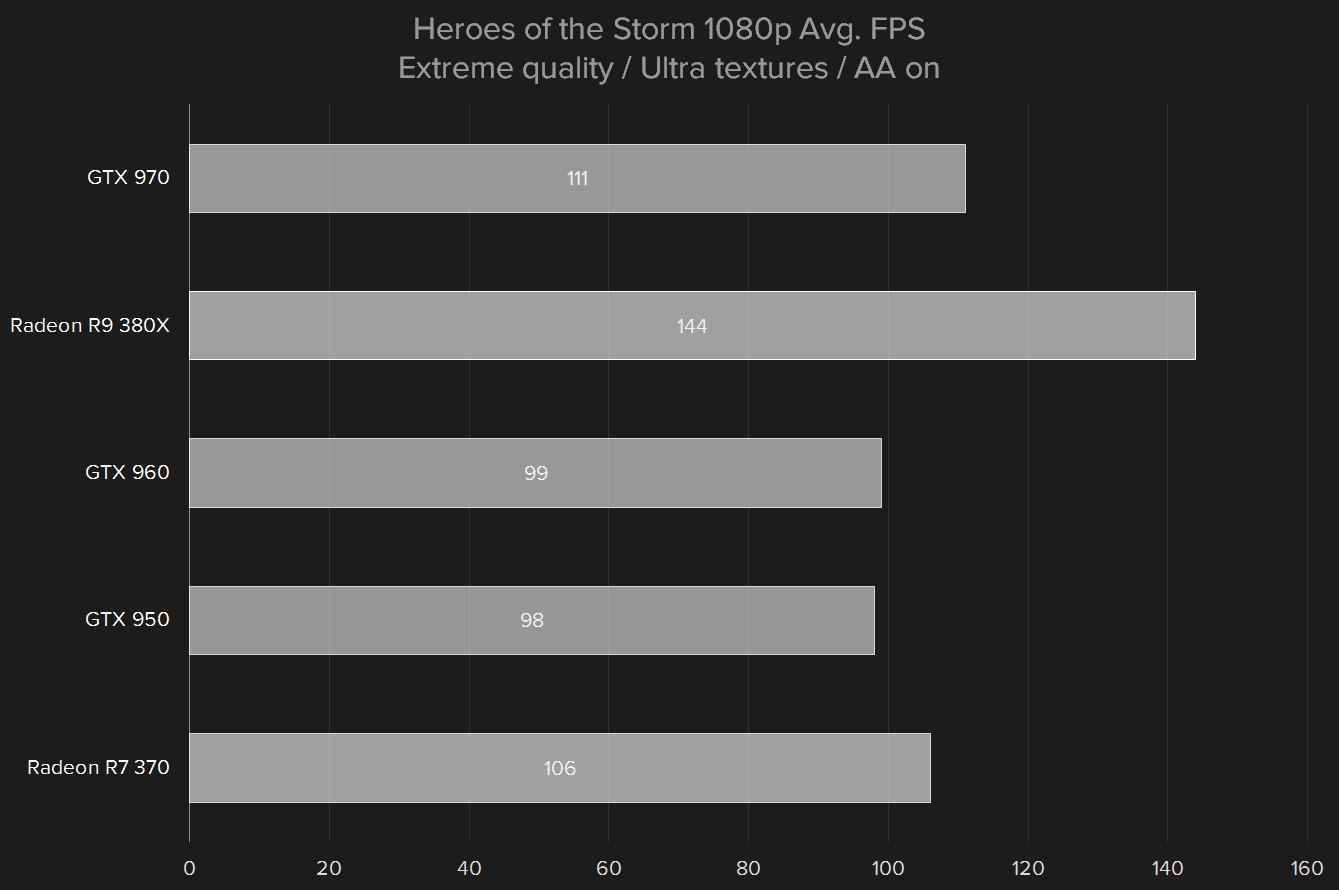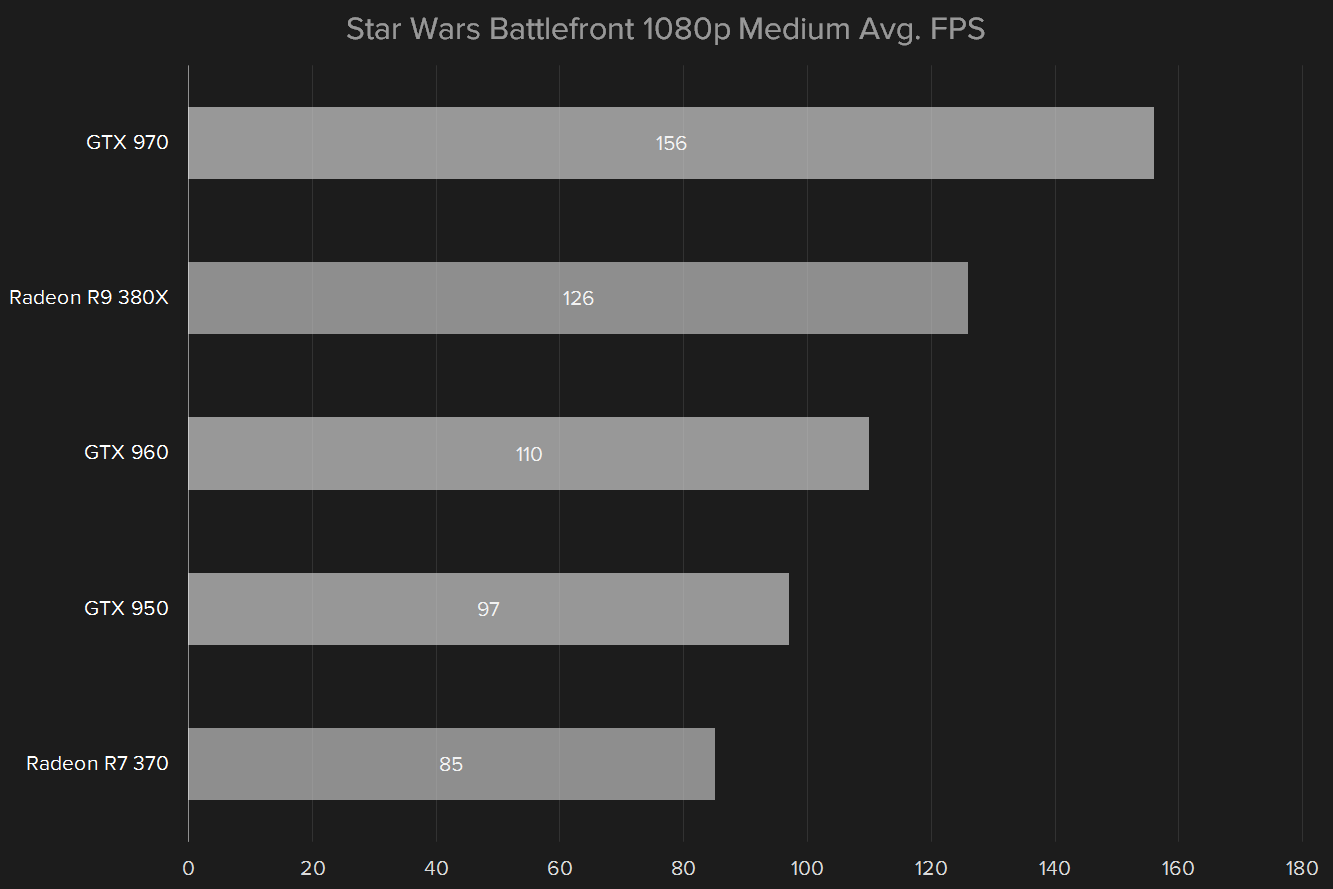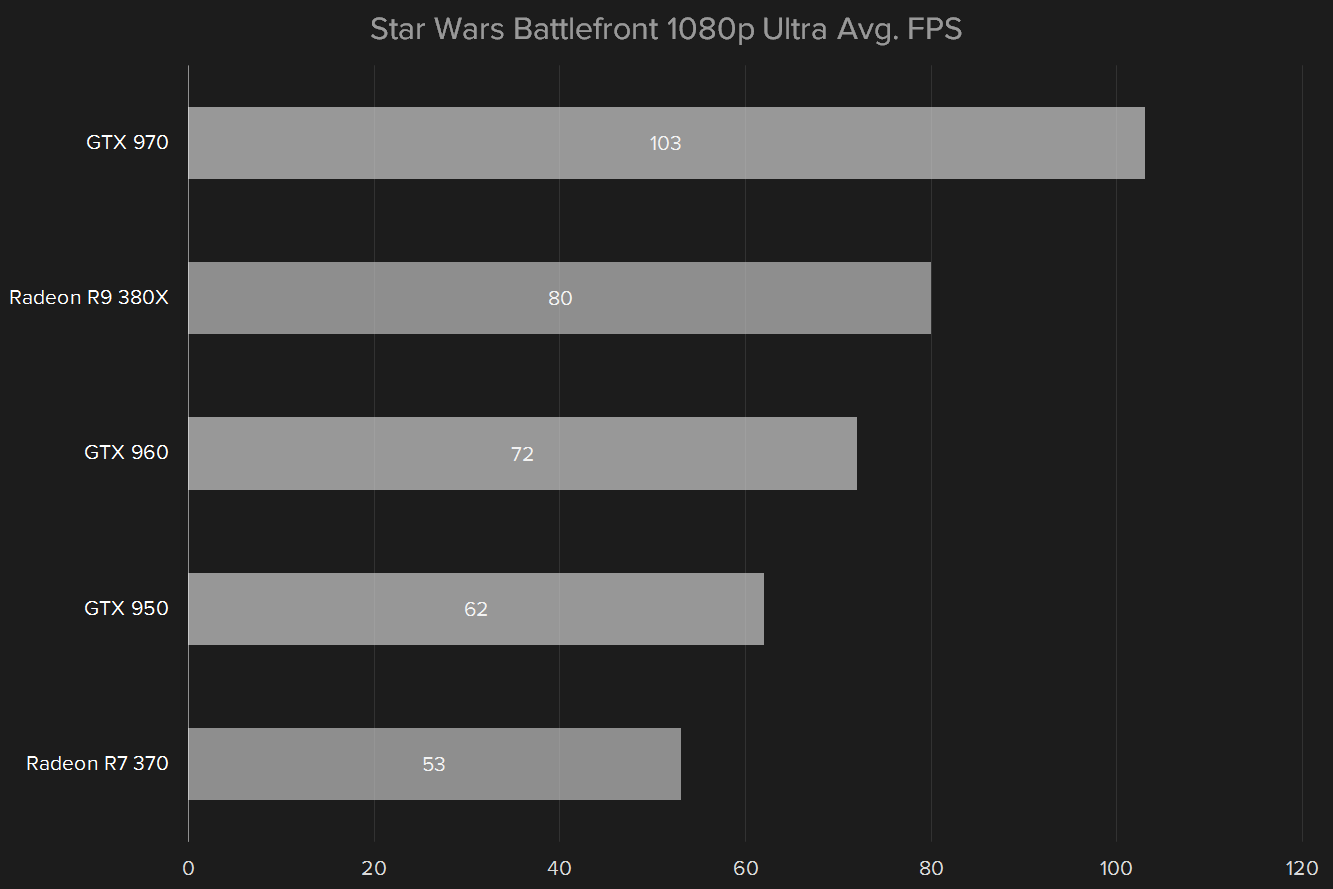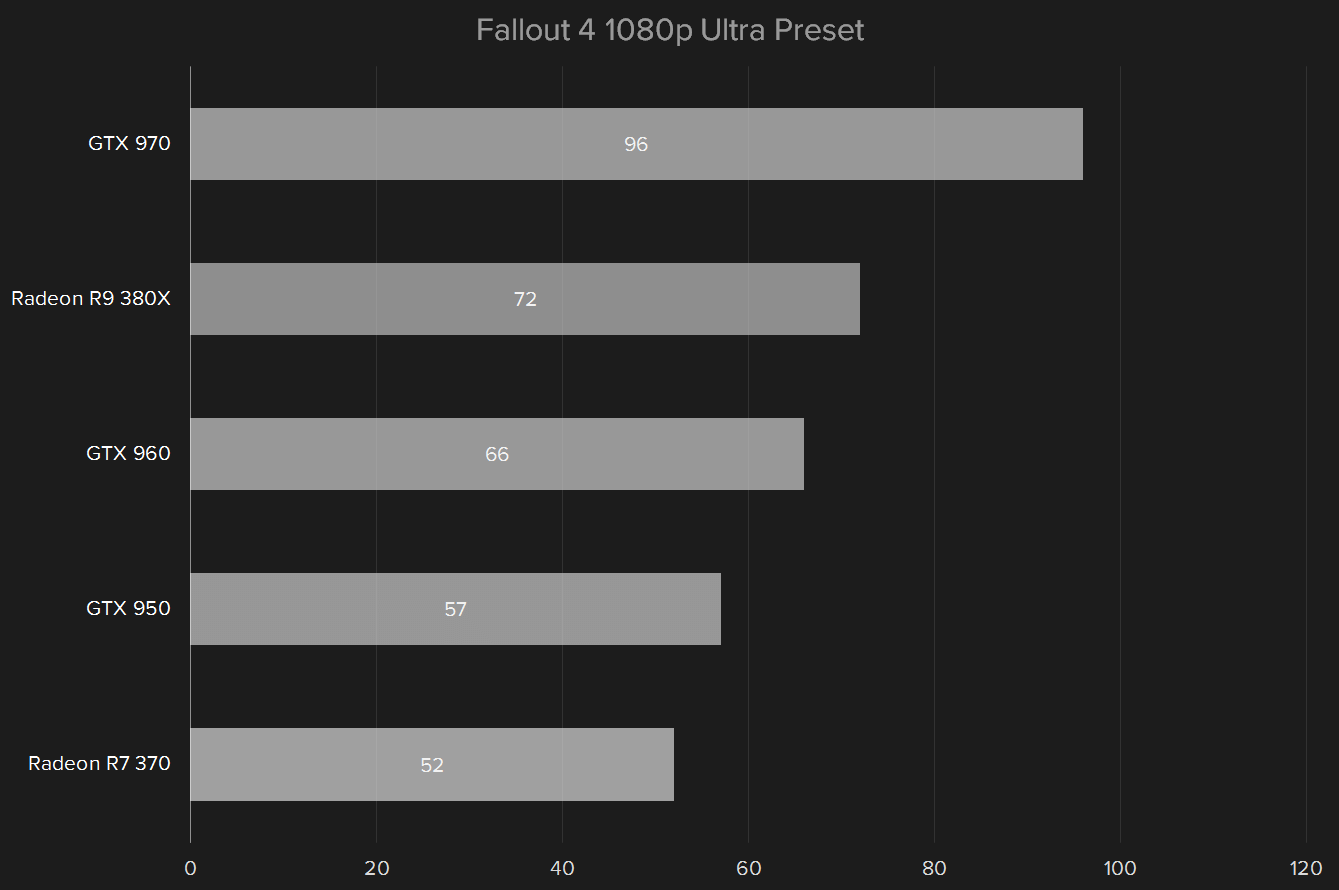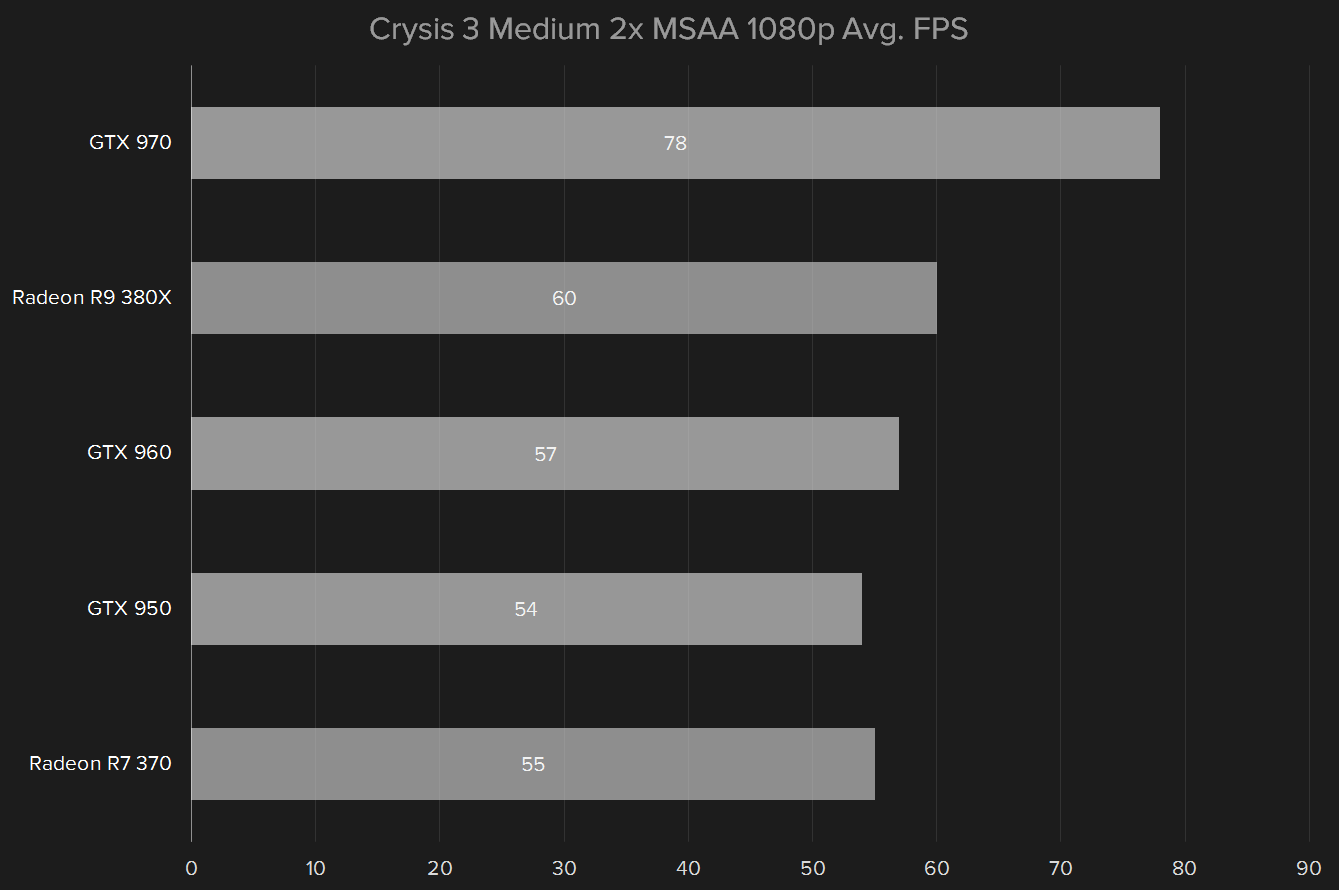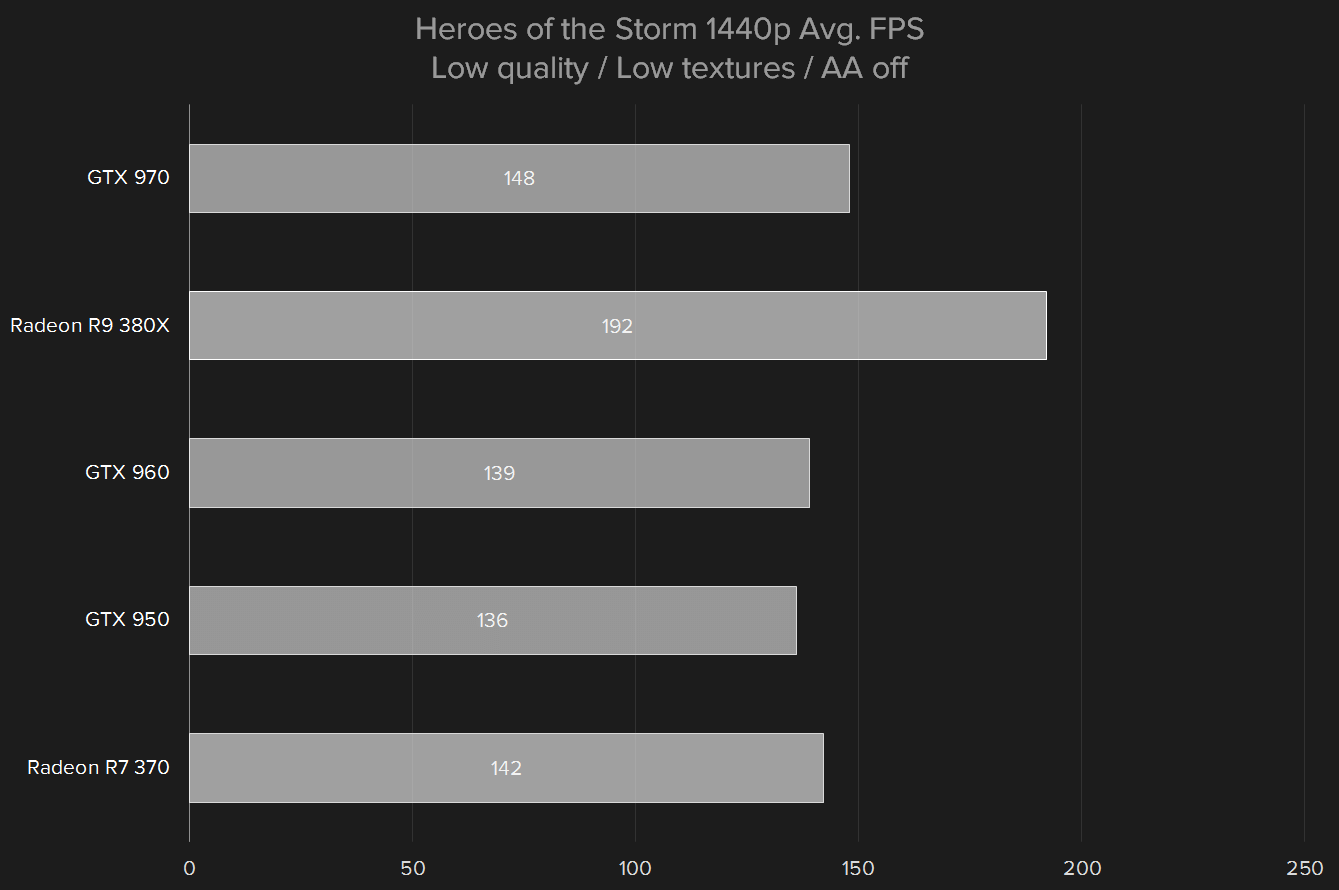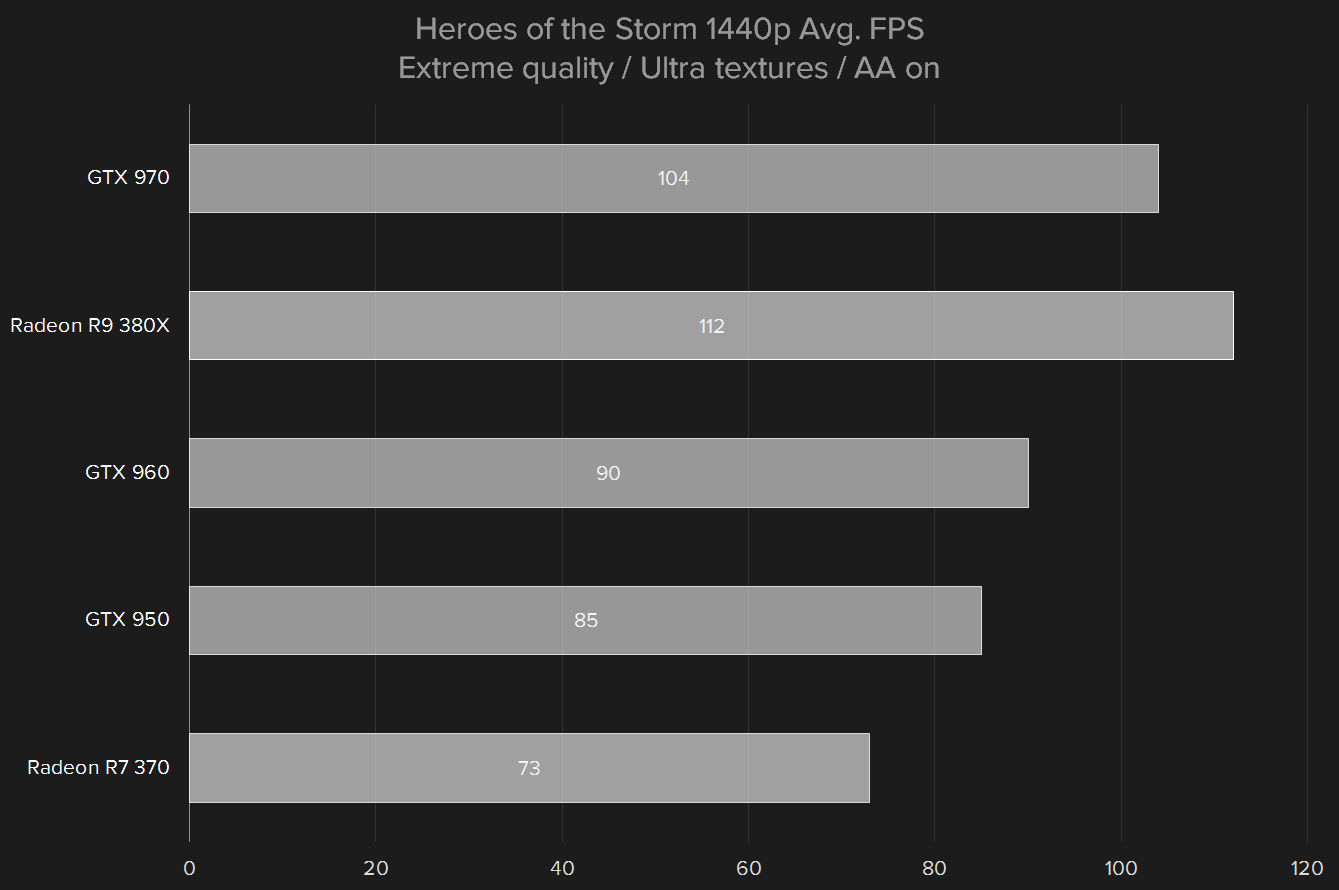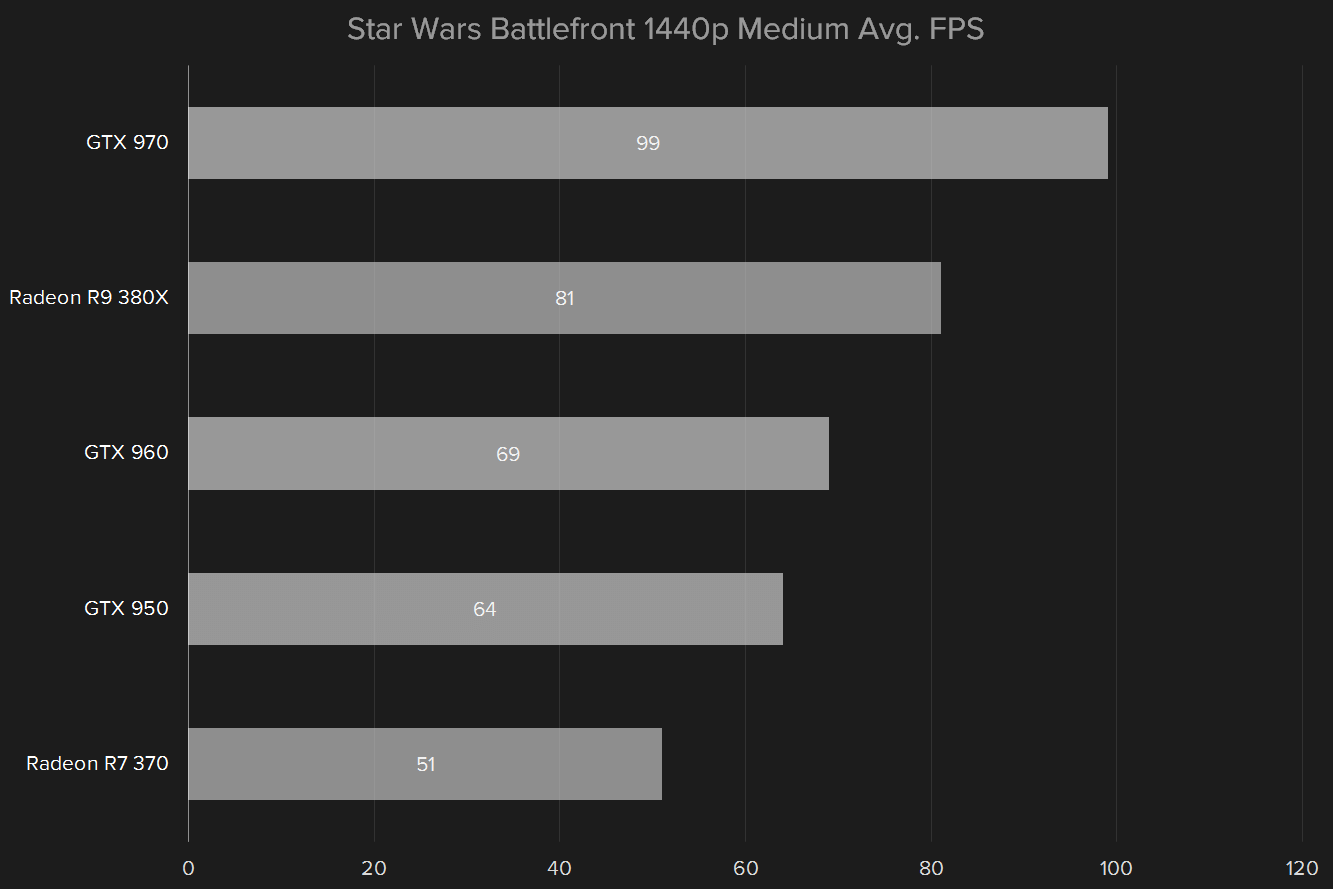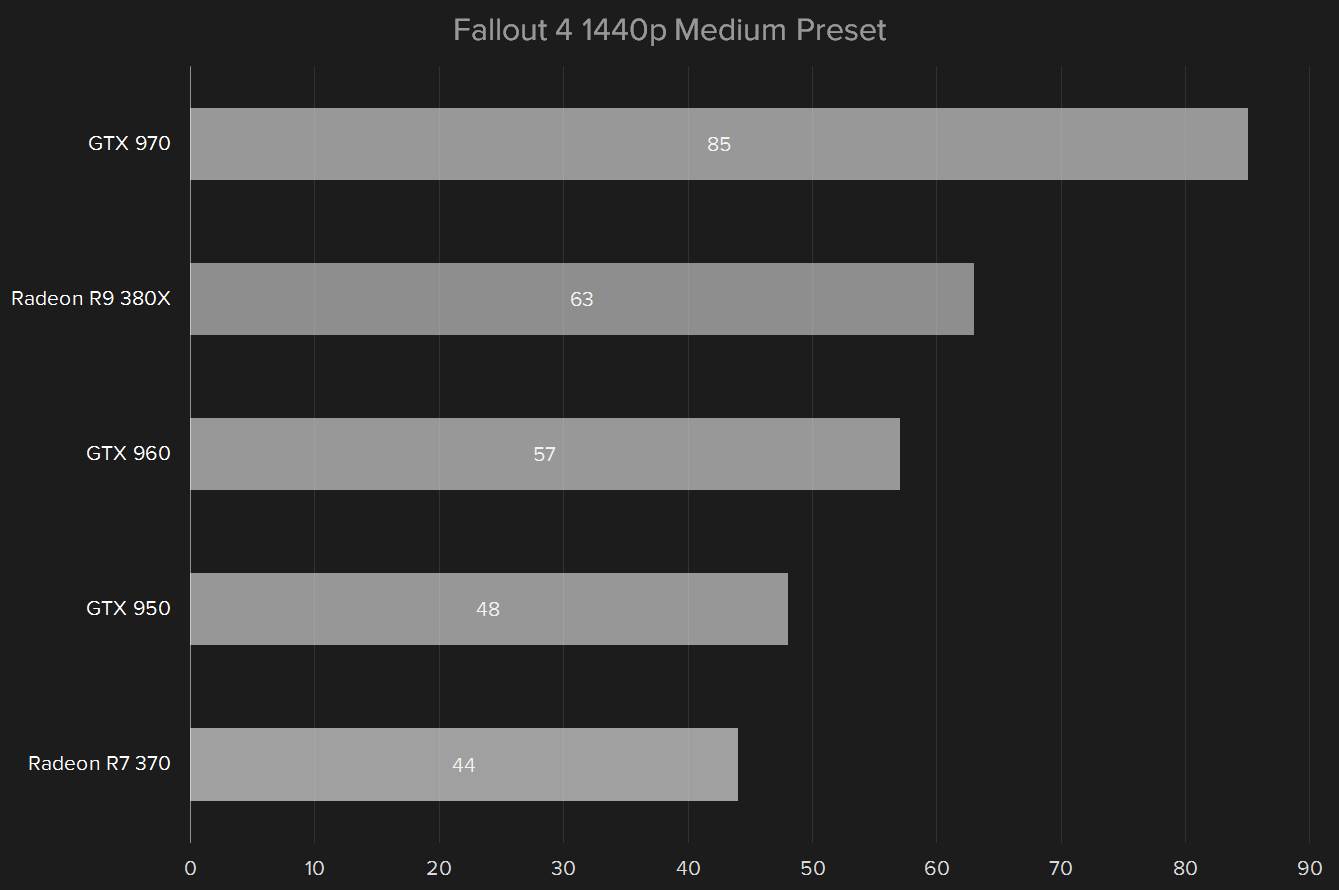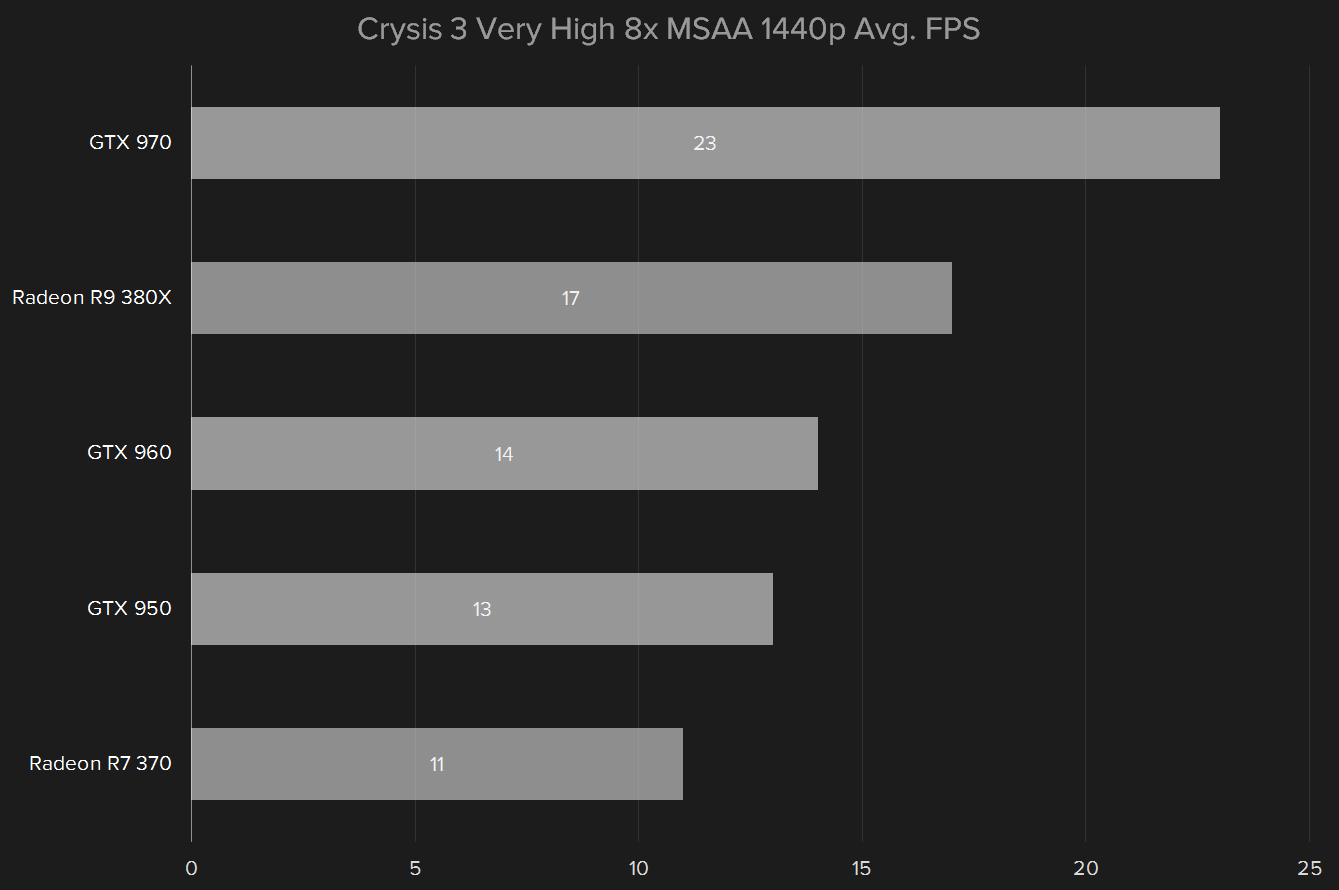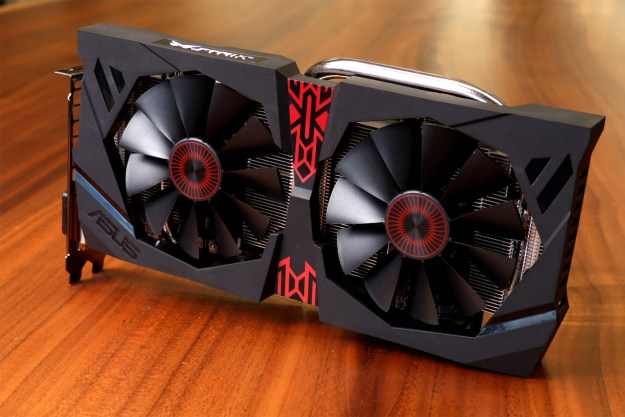
“AMD’s latest mid-range card slays 1080p, but doesn’t quite fulfill its promise of excellent 1440p performance.”
- Excellent 1080p performance
- Quiet operation
- Reasonably affordable
- 1440p gameplay isn’t always smooth
- Doesn’t stand out from the competition
AMD’s position has recently deteriorated in the video card space, a sign that the issues facing the company’s CPU business are beginning to hold back its GPU division, as well. The core problem seems to be the research and development of new hardware – which makes sense, given AMD’s tight financial position.
This has forced the company to fill out its product line with tweaked, re-branded video cards, and the 380X is no exception. Its GPU architecture is similar to that found in last year’s Radeon R9 285. That means there’s no major new features to remark on, and the card targets the same thermal design power (TDP) of 190 watts, provided over two 6-pin PCIe power connectors.
Still, the specifications show a card that’s no slouch. It serves up 2,048 stream processors with an engine clock of up to 970MHz, resulting in 3.97 TeraFLOPs of performance. That’s almost double the grunt of a PlayStation 4.
Memory bandwidth is a bit less impressive, at least on paper. 4GB of GDDR5 memory communicates over a 256-bit interface at a clock speed of 1,425MHz, resulting in bandwidth quoted at 182.4 gigabytes per second. That’s only slightly more than a PlayStation 4. However, the comparison isn’t apples-to-apples – the console uses one lump pool of memory, while a PC has separate memory for the video card and for other system tasks (the system’s RAM). The R9 380X compares favorably to the GTX 960, which quotes bandwidth of just 112GB/s.
While there’s no new headline feature (like the Radeon R9 Fury’s high bandwidth memory) to be found here, the R9 380X does support AMD’s full suite of features. That includes FreeSync, Virtual Super Resolution, PowerTune, and DirectX 12 (at feature level 12_0).
Meet the Strix
Everything said above refers to reference design – something many manufacturers won’t follow. Our review unit is a great example. Built by Asus, the Strix R9 380X OC bumps the engine clock up from 970MHz to 1,030MHz, an increase of about six percent. The card can go higher in “OC Mode,” though the increase is a mere 20MHz.
The Radeon R9 380X almost doubles the grunt of the PlayStation 4.
The overclocking abilities of the Strix are a bit disappointing. A six percent increase isn’t much, and engine clock increases generally don’t result in a linear increase in gameplay performance. Asus itself makes that clear, and claims a tiny three to five percent improvement in most games.
Fortunately, there’s more to the card that its clock speed. It also includes a custom dual-fan design that keeps the card cooler and, more important, allows virtually silent operation under certain conditions.
I was pleasantly surprised by how well this worked in practice. AMD cards tend to run hotter than their Nvidia counterparts, and that extra heat means more aggressive fans. Here, the card utters barely a peep. In most situations, our test rig’s CPU air cooler made more noise than the card.
While the fans reduce noise, they also add bulk. The card is 10.7 inches long, 5.5 inches wide, and 1.7 inches thick. It’s one of the largest cards we’ve recently reviewed, exceeding even the GTX 980 Ti’s dimensions in width by a half-inch. That said, the Strix should fit in any case that supports a full-sized PCI Express video card.
Asus ships the card with its own software suite which controls overclocking and has a variety of performance improvement options, most of dubious use. For example, it can turn off “Windows Services and Processes” that are unneeded. In my past experience, that strategy doesn’t change game performance. The suite works well overall, but I think most users won’t need to touch it.
Positioning
AMD’s documentation stressed the Radeon R9 380X as a solution for 1080p gaming – and beyond. The company expects that it will play all modern titles smoothly at 1080p resolution, and can handle most at 1440p. Star Wars Battlefront was specifically called out, as you might expect, but the company also listed Grand Theft Auto V, Metal Gear Solid V, and Cars as titles that should average over 50 FPS with detail set to high.
Nvidia’s GTX 960 didn’t catch the 380X in any of the games we tested.
Pricing will depend on the particular card, but AMD quotes a base MSRP of $230 for the reference card. Asus’ vanilla Strix, which is not overclocked, sells for $240. Our overclocked review unit carries a $260 price tag.
That puts it up against the high end of the GTX 960 line-up, which includes heavily overclocked cards. Entry-level versions of the GTX 970 sell for about $300, which is a good $60 more than the base 380X. AMD has positioned the 380X smartly, wedging it between two of Nvidia’s entries to serve a mid-$200 price point that the green team mostly ignores.
3D Mark
Futuremark’s 3D Mark is the gold standard in synthetic benchmarks. The company’s Fire Strike test, which has been available for several years, rarely leads us astray. While relative performance can change from game to game, the average usually falls somewhere close to what 3D Mark suggests.

Well, this graph is neat and tidy, isn’t it? The 380X produced performance almost smack dab between the GTX 960 and 970, beating the former by just over 15 percent. That’s a respectable bump, and may be enough to deliver a smooth, 60 FPS experience in games the GTX 960 can’t quite handle.
1080p Performance
While 4K monitors are becoming more affordable, most gamers still game at 1080p. Displays supporting that resolution are often less than $200, and the lower pixel count means solid performance can be enjoyed with a modest card. The new R9 380X proves that to be the case, as it’s actually overkill in most situations.
Heroes of the Storm and Fallout 4 pose little challenge at this resolution. Both easily exceed 60 frames per second even at maximum settings. Crysis 3 is a different story. This remains one of the most demanding games in existence, and at maximum detail the 380X can’t even manage 30 FPS. It does hit 60 FPS at medium, however.
Nvidia’s GTX 960 didn’t catch the 380X in any of the games we tested. Readers should note that the GTX 960 we tested was a 2GB model, while versions equivalent in price to the R9 380X have 4GB. However, that likely would not make a difference. All of the games tested appear to be hitting GPU performance limitations rather than running out of frame buffer.
1440p Performance
The R9 380X performs well at 1080p, but that’s not the real challenge. AMD is targeting the cards at gamers using a 2,560 x 1440 monitor. That resolution ups the pixel count by more than 70 percent relative to 1080p, so it’s significantly more challenging.
These results make the extra challenge clear. While the 380X played Fallout 4 at 72 FPS on 1080p/Ultra, it averaged just 47 FPS at 1440p/Ultra, a significant reduction that unfortunately takes the game below the magical 60 FPS mark. The same occurs in Crysis 3 at medium detail, which averages only 39 FPS at 1440p.
It’s hard to interpret these results in a way that makes AMD’s claim of 1440p gaming seem appropriate. While the card is adequate at that result, it’s not a fire and forget solution. Gamers who buy it will still need to turn off some details to achieve an ideal framerate.
Conclusion
DT accessory pack
Up your game and the get the most out of your gear with the following extras, hand-picked by our editors:
Nixeus Vue 1080p FreeSync Monitor ($280)
If you want FreeSync support at a low price, you won’t find a better choice than this Nixeus monitor.
Antec Three Hundred Two Gaming Case (75.84)
This reliable Antec enclosure is a great choice for a budget PC gaming build.
Razer Mamba Tournament Edition ($78)
Razer’s wired Mamba offers the fast response times gamers demand from their peripherals.
AMD’s R9 380X fills a specific, but underserved, audience. Gamers who have around $250 have found themselves wedged between $200 options that are meant for 1080p, and $300 options that target 1440p and beyond. The Radeon R9 380X fills that gap, though it’s not an over-achiever, and it’s not powerful enough to play all modern games at 1440p and maximum detail.
The card also struggles to define itself relative to Nvidia’s GTX 960. The Radeon R9 380X is quicker than the GTX 960, but not often by a wide margin. From a value perspective, the 380X’s performance is about right. It’s a bit more than 10 percent more expensive than an average entry-level 960, and about that much quicker. While we haven’t had the chance to test the 960 with 4GB of RAM, the results achieved by others who’ve reviewed the card suggest its performance is likely similar to the R9 380X.
That means the R9 380X is, like so many recent AMD cards, a reasonable but not exceptional alternative to Nvidia’s hardware. It offers similar performance per dollar and, in the case of the Strix, is similarly quiet, but fails to stand out from the field.
Highs
- Excellent 1080p performance
- Quiet operation
- Reasonably affordable
Lows
- 1440p gameplay isn’t always smooth
- Doesn’t stand out from the competition





